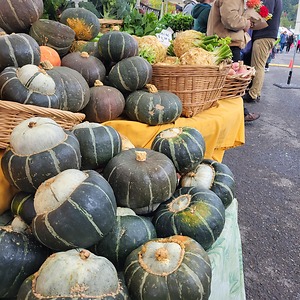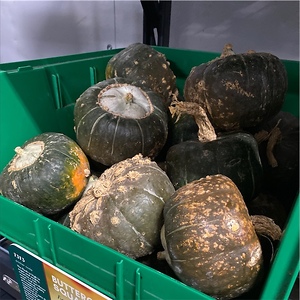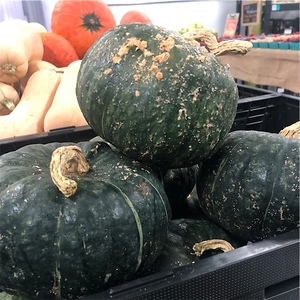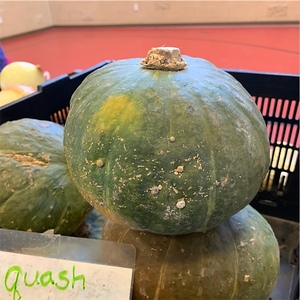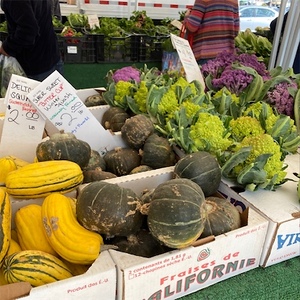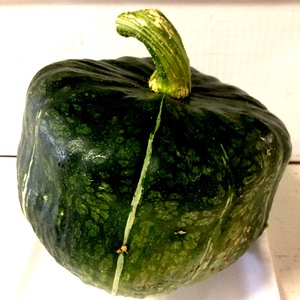

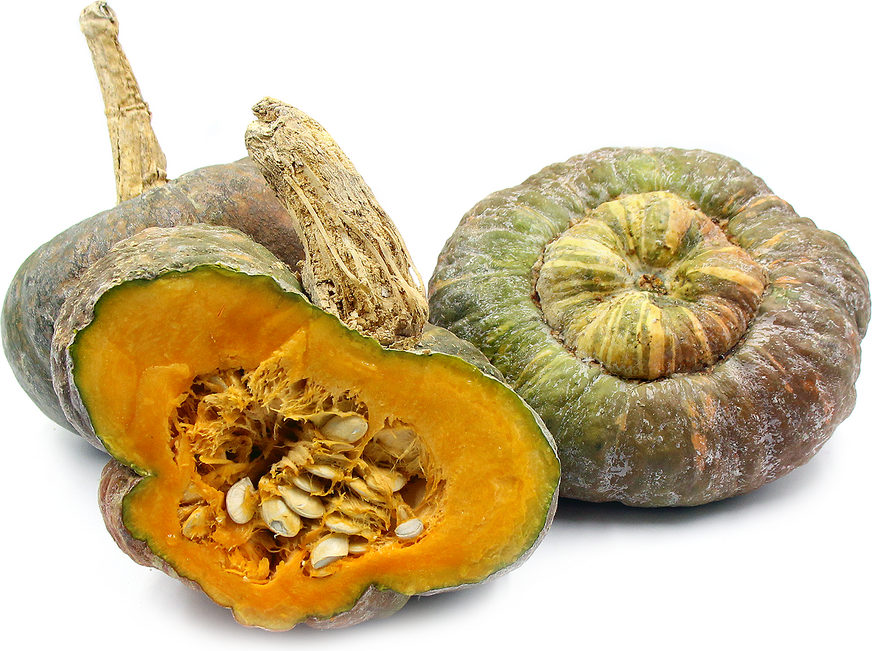
Green Buttercup Squash
Estimated Inventory, 32 lbs : 0
Description/Taste
Green buttercup squash is small to medium in size, averaging 10-20 centimeters in diameter and 5-7 centimeters in height, and is round, squat, and compact in shape. The dark green skin is spotted and flecked with light green to gray markings, and narrow stripes run down the bulbous, semi-ridged sides. Green buttercup squash has a characteristic turban-like cap on its blossom end that grows in size as the squash matures and it also has a beige, rough stem. The thick flesh is orange, dense, and has a hollow center that contains a stringy pulp with many cream-colored, hard, and flat seeds. Green buttercup squash has a clean, green aroma similar to a cucumber when sliced fresh and when cooked, the flesh becomes semi-dry, satiny, and smooth with a mild, sweet flavor similar to chestnuts, sweet potatoes, and the flavor of a hubbard squash.
Seasons/Availability
Green buttercup squash is available in the fall through winter.
Current Facts
Green buttercup squash, botanically classified as Cucurbita maxima, is a popular winter squash variety that grows on vines 1-4 meters in length and is a member of the Cucurbitaceae family along with pumpkins and gourds. Green buttercup squash was initially discovered as a chance seedling and was bred to be an alternative for sweet potatoes in culinary dishes. Today Green buttercup squash remains one of the most favored winter squashes for its flavor and creamy texture and is widely used in appetizers, side dishes, and main dishes.
Nutritional Value
Green buttercup squash is rich in vitamin A, specifically beta-carotene, and also contains dietary fiber and some vitamin C.
Applications
Buttercup squash is best suited for cooked applications such as baking, steaming, or roasting. The cooked flesh can be pureed and used as a filling for pies and ravioli, or added to soups, risottos, sauces, and curries. It can also be peeled, cubed, and added to chili, enchiladas, atop pizza, in pasta preparations, or stuffed and baked with both sweet and savory fillings. Having a taste and texture similar to sweet potato, it can also be used in lieu of the tuber in recipes. Buttercup squash pairs well with hard cheeses, nuts, brown sugar, ground beef, lentils, cinnamon, nutmeg, and fresh herbs such as sage, cilantro, chives, and parsley. It will keep up to three months when stored in a cool and dry place.
Ethnic/Cultural Info
Green buttercup squash was one of five squashes out of one hundred thirty-four different cultivators given the mark of excellence by authors of the 1937 book, “The Vegetables of New York” for its mild flavor, creamy texture, and compact size.
Geography/History
Buttercup squash was discovered as a chance seedling in 1925 in a growth area of quality squash at the North Dakota State University Agricultural Experiment Station. Believed to be a cross between a quality squash and an essex variety, buttercup squash was found by Dr. Albert F. Yeager. The squash’s seeds were saved, replanted, and went through years of selection and self-pollination until it was released in 1931 under the buttercup name. Dr. Yeager specifically bred the squash to be a substitute for the sweet potato which was difficult to grow in the Northern Great Plains. Buttercup squash was one of the most extensively tested squashes in United States history and before it was released it went through thorough examinations at North Dakota College to test the flavor, texture, color, sugar levels, and dry matter content. Today Green buttercup squash can be found at specialty grocers and farmers markets in the United States.
Recipe Ideas
Recipes that include Green Buttercup Squash. One



